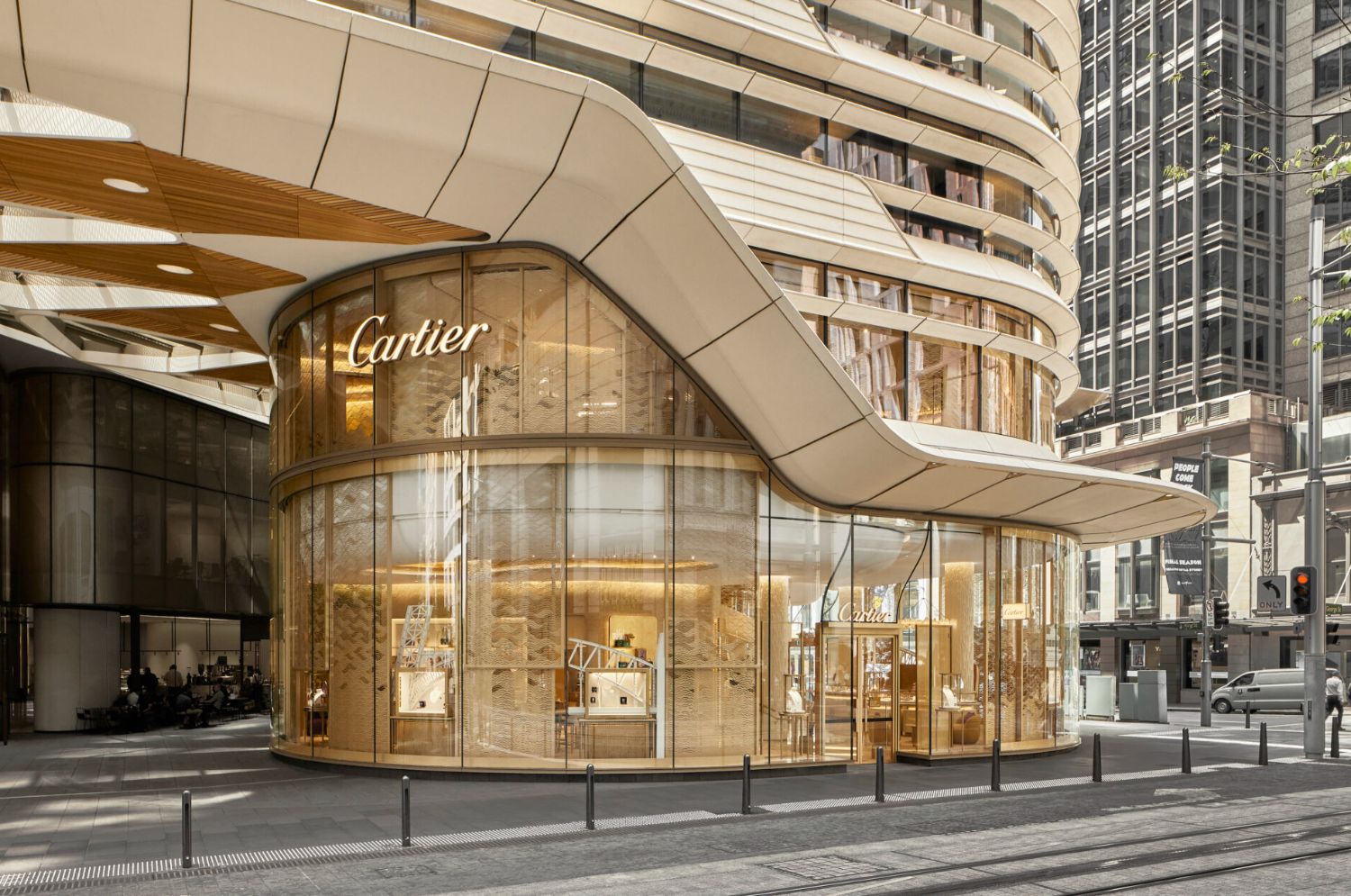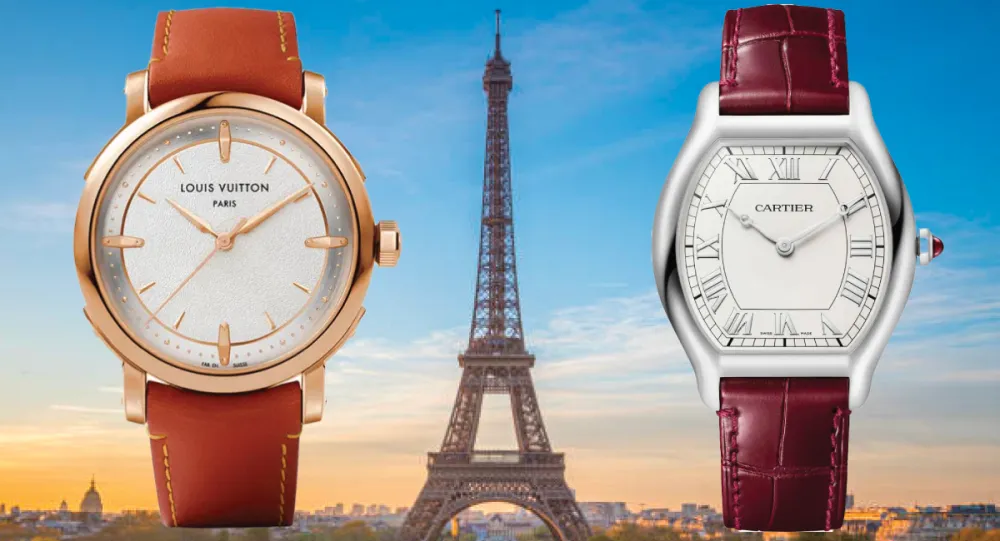
From Private Parties To Paperwork: Here’s How The Luxury World Really Treats Its VIPs
There are very important clients, and then there are very, very important clients. Here’s how to know where you rank in the worlds of wine, watches, cars and jewellery.
Related articles
On a warm July evening, an intimate group of elegantly attired guests roamed the gilded halls of the Palace of Versailles, sipping Champagne while being serenaded by violins. The unforgettable party included a candlelit dinner prepared by Michelin-star chef Emmanuel Renaut, a display of rare diamond jewels and a fireworks display that illuminated the sky above the palace while an orchestra played in the famed gardens below. If not for the fact that many of the guests jetted in courtesy of their host, Van Cleef & Arpels, one could be forgiven for thinking they’d time-traveled back to the 17th century, when the merchant Jean-Baptiste Tavernier presented the Sun King, Louis XIV, with jaw-dropping jewels from his trip to India in the very same rooms.
This fairy tale was a quintessentially private affair (strictly no photos) for the company’s top clients, who were invited to celebrate the unveiling of the collection, the Legend of Diamonds—and to indulge in three days of meticulously organised culinary and wine experiences. Before the first cork popped at Versailles, the guests were ferried to private tours and specially prepared menus at Château Margaux one day, followed by lunches at Château de Vaux-le-Vicomte and Champagne Perrier-Jouët.
“The story behind the collection is always at the centre of the experience,” says Nicolas Bos, Van Cleef’s president and CEO. In this case, that story revolved around the 910-carat Lesotho Legend, the fifth-largest rough diamond ever mined, which the French jeweller had turned into a glittering array of high jewellery.
For big spenders, these money-can’t-buy experiences have become the norm: This past summer, Cartier flew its premier clients to Madrid for three days of carefully planned activities, including tours of art collections, Michelin-star meals, a gala in the 18th-century Liria Palace where Rita Ora performed and, of course, a first look at its Beautés du Monde high jewellery. Louis Vuitton unveiled its 125-piece jewellery collection at an extravagant dinner at the Dar el Bacha palace in Marrakech for clients, as well as Kylie Minogue and Chloë Grace Moretz. Gucci’s higjewelleryry took pride of place at the 18th-century Villa Albani Torlonia in Rome, which contains one of the world’s premier private collections of ancient and Renaissance art. At the dinner, British singer Sam Smith wowed the small group in the garden.
There have never been more millionaires and billionaires and, consequently, the global smorgasbord of luxury products has never been more in demand. But because what defines this increasingly attractive corner of the economy is a sense of exclusivity, the makers of high-end wines, cars, watches and other collectables have had to up the ante. Just as airlines have their silver, gold and platinum status, luxury houses employ similar, if more discreet, rankings for their most dedicated customers—and the kind of attention (and scrutiny) said clients get depends almost entirely on where they are in that VIP pecking order. In one industry, that might mean strolling down the red carpet for a once-in-a-lifetime event. In another, it may translate to being allowed to apply to purchase a new product, once it has been released.
In any luxury industry, though, the payoff for securing VIP clients, who can spend millions of dollars a year with a single company, is astronomical—and some sectors invest fortunes in wining and dining their heaviest hitters. From the upper echelons of wine collecting, for instance, Cardinale, the Napa Valley winery that produces a single (and much sought-after) Cabernet Sauvignon each year, takes a networking approach to VIP relations, hosting private dinners at the homes of its best customers. These insiders are encouraged to invite friends who may be interested in acquiring rare vintages for their own cellars—a little like a high-stakes Tupperware party.
The wine world is intrinsically convivial, so much so that executives sometimes open the doors of their own homes for private events, too. Jean-Charles Boisset, proprietor of a winery that produces bottles in Napa, Sonoma and Burgundy, has been known to invite his top collectors to dine at the California hilltop manse he shares with his wife and children. The house centres on an indoor pool illuminated by Baccarat chandeliers, and synchronised swimmers, aerialists and magicians have all been brought in as entertainment. At Boisset’s 50th birthday party in 2019, Joseph Minafra, the lead for innovation and technical partnerships at NASA’s Solar System Exploration Research Virtual Institute, presented the host with a meteorite. Boisset later had chunks of the space rock affixed to bottles of a wine called the Surrealist-Meteor, produced in an edition of just 250, which he offered first to members of his JCB Collectors society, who bought all but a handful of the available bottles, which then sold out in a JCB tasting salon.
So how does one make the journey to Boisset’s hilltop—or any other wine-world apex? Start by landing a coveted spot on a winery’s allocation list. That first rung of the VIP ladder itself requires a certain display of largesse, but once you’re on, you have the distinct privilege of buying cases of wines months before other customers—and at lower prices than you’d pay via your local agent. In some instances, it also means you have access to special bottles that are never made publicly available.
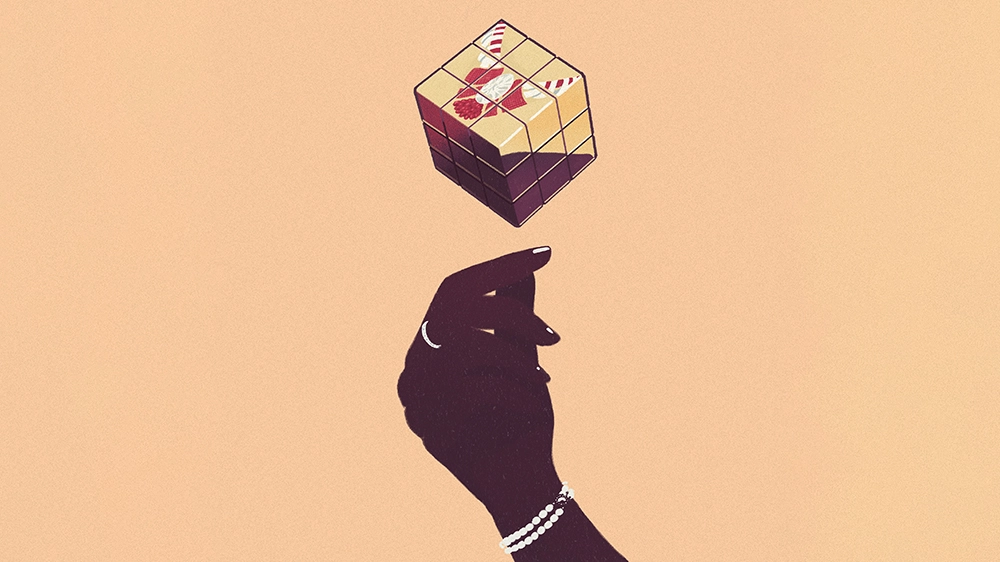
But in the jewellery world, a realm in which the biggest houses produce only dozens of unique pieces annually but the pool of serious collectors is likewise more limited, keeping the VIPs happy takes on heightened importance. “A small number of customers can have a major impact on a jeweller’s business,” explains Robert Burke, a New York–based luxury consultant.
“These houses are doing everything to make their customers feel special and be excited to buy their collections.”
-Robert Burke
“We are in the business of emotion,” says Mercedes Abramo, CEO of Cartier North America. The house’s elaborate high-jewelry presentations for VIPs in glamorous destinations around the world are designed to forge a far deeper connection with clients than a mere boutique visit might achieve. When a client purchases a piece at one of these events, Abramo explains, “they will remember the moment every time they wear it.” Put another way, a bracelet may be far more meaningful when it comes with a personal story—and bragging rights that you bought it as one of a handful of elite guests at a Spanish palace or a château in the South of France.
But what if you’re just getting started on your climb up the ladder of luxury shopping? An entry-level VIP experience might be an exclusive local party. Last fall, Tiffany & Co. took over a $75 million art-filled New York townhouse to showcase its new designs, loose gemstones and the trophies it creates for the NFL, the NBA and the US Open tennis championships. Even the historic Tiffany yellow diamond was on display—and the company invited many elite customers in the Americas to take a look.
You know you’re moving up when you get face time with a chief executive. In September, Tiffany CEO Anthony Ledru hosted around 65 VIPs in São Paulo, Brazil, where guests previewed the newest high jewellery in one-on-one meetings. It was there that Tiffany sold one of its most expensive Bird on a Rock brooches to date. Typically, these pieces, which follow a 1965 design by Jean Schlumberger, are set with large citrines or aquamarine stones—and as a result are relatively expensive (this fall, 1stDibs was offering one for $140,000). But as the São Paulo example featured a fancy intense yellow diamond, its price was in the seven figures.
“I believe the future is more about intimacy, and it’s very hard when you have a very large setting,” Ledru says of the smaller events he stages higher up the VIP food chain. “We believe in small groups where you can truly interact with the clients and really spend time with them.”
Those targeted individuals are treated not only to fabulous trips but also to claims on the most rarefied pieces, which never find their way to the boutiques; they’re presented only to clients with demonstrated buying power and interest. During a Tiffany trip to this year’s Venice Film Festival, one couple made a major purchase—which may be why they were subsequently invited to a high-jewelry event in Dubai, where they happened to acquire an extremely rare red diamond. While Tiffany wouldn’t reveal its price, a similar stone sold for nearly $4.5 million at Christie’s two years ago. The couple met with Tiffany’s design team to turn the stone into a bespoke piece.
The highest echelons of VIP treatment are often marked by this level of collaboration between customers and craftsmen—because there’s nothing quite so exclusive as a one-off you helped design. In most cases, there’s an expectation of privacy around these elite transactions. The automotive world, which generates breathless speculation about who may have commissioned its unique editions, is famously tight-lipped about how it treats its best customers. Bugatti, which produces some of the most expensive cars in the world, makes paying a visit to its headquarters in Molsheim, France, an exercise akin to a papal audience. “We are not a museum and don’t offer tours,” says Cedric Davy, COO for Bugatti of the Americas. “You are only able to visit the factory if you are a customer, and we only receive one customer per day.”
Rolls-Royce isn’t quite so rigid. In the past, it has brought groups of VIPs to its factory in Goodwood, England, where in early 2022 a small gaggle of customers was invited to place orders for its forthcoming electric vehicle, the Spectre, months before the public even knew it existed.
But its top rung is reserved for the likes of car collector Michael Fux. By some accounts, the Cuban-born, New Jersey–based mattress magnate owns over 120 rare cars and has purchased 15 from Rolls-Royce. That devotion has earned him a direct line to the company’s design department and an entire palette of proprietary colours named after him, from Fuxia—his own shade of fuchsia—to Fux Jade Pearl. According to Martin Fritsches, president and CEO of Rolls-Royce Motor Cars North America, Fux and others of his ilk receiving their commissions warrants “special occasions like Monterey Car Week for public delivery.”
Some high rollers may shy away from such overt displays but still appreciate being courted in an ultra-personalised way that taps into their passions. Boucheron, the French jewellery firm that counts the British royal family among its customers, recently hosted a client and family with an affinity for astrology for a private dinner under the stars at the Côte d’Azur Observatory in France. “To me, there is no point of living a lavish life and dying rich,” says Hélène Poulit-Duquesne, Boucheron’s CEO. “It’s only about gathering extraordinary experiences and loving memories.” Another example in the house’s bag of tricks: an overnight stay in the apartment above Boucheron’s historic Paris flagship store (from the bathtub, you get sweeping views of the Place Vendôme), a privilege bestowed by invitation only five nights a year.
Intimacy on this order grew in relevance in the wake of the Covid-19 pandemic, when most big events had to be cancelled. In response, Cartier invited select groups of VIPs to Jackson Hole, Wyo., (with the option of flying in on your own plane) for three days in October 2021 to view its Sixième Sens par Cartier high-jewelry collection staged in a modern house. Guests stayed in nearby homes and hotels and followed personalised itineraries that included fly-fishing, a fancy picnic and a horse exhibition. “It was exclusive but still down-to-earth,” explains Abramo, the North America CEO, who spent one-on-one time with each guest. “We were able to engage with clients who don’t want to go to a black-tie gala because it’s not their style.”
These types of elite events are reserved for the VIPs, the ones who spend seven figures on a single piece—and Abramo’s team makes sure the guest list is a mix of people who will be open to meeting others on a similar level. Those not keen on socialising receive a private after-hours showing at their local boutique instead, or a curated selection of jewels brought to their home or office.
Some invitations may be too good to pass up. Earlier this year, Bulgari CEO Jean-Christophe Babin threw a serious celebration at the Italian Embassy in Paris. Oscar winner Anne Hathaway and Priyanka Chopra Jonas were there, and Carla Bruni sang. Babin says such events underline the house’s connection to stars of the silver screen, including Sophia Loren and Elizabeth Taylor, who were notable Bulgari clients in their time. And having their contemporary counterparts at the dinner table with clients is akin to a live-action marketing campaign. When a celebrity “is wearing a high-jewelry necklace across from you,” Babin says, “you can identify yourself as a potential owner” of the same piece.
Jewellery houses are also adept at determining a client’s spending potential and will take pains to do what’s needed to facilitate the progression to the next level. Lucy Guo, a Miami-based start-up founder and venture capitalist, was a guest at Cartier’s jewellery exhibition at the Dallas Museum of Art in May and said the trip gave her a deeper appreciation of the brand. “Cartier really takes care of you and makes you feels special,” she says. Guo and a guest were given a driver for two days to take them to personalised activities, including the gala museum dinner. She returned home having bought a new diamond animal bracelet. Win win.
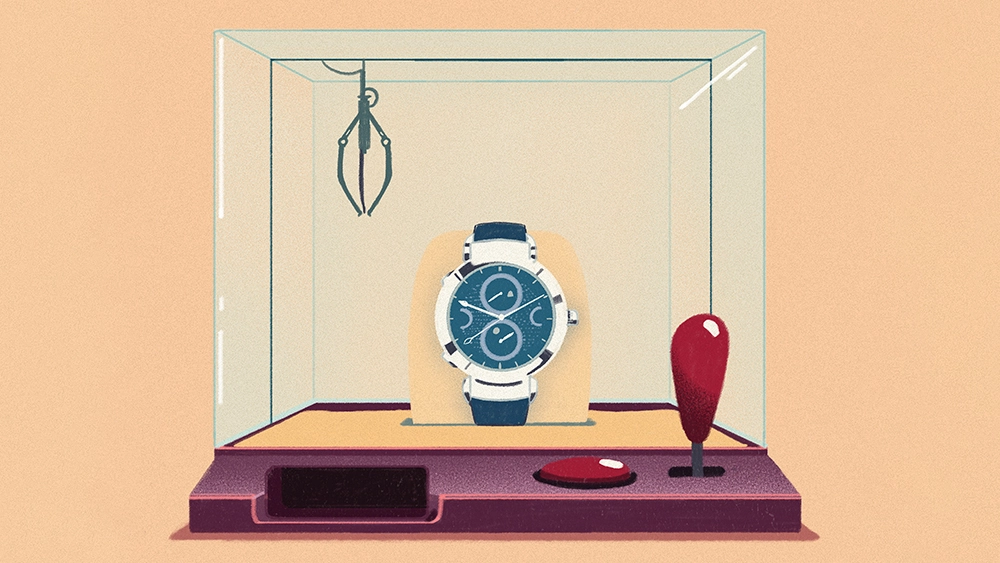
But while many luxury industries go to significant lengths to cultivate relationships with their best clients, at least one tends to take a contrasting psychological approach: Rather than offering cushy perks or throwing lavish fetes to flatter their best customers, watch companies make them jump through hoops to land the most exclusive products—and convince those clients that the process is an honour. Thanks in part to extremely limited production and an exponential increase in the horologically inclined, very few can waltz into a boutique and skip back out again with something new on their wrists.
You have to work for it: For the crème de la crème of watchmaking, a cross between a college application and an IRS 1040 may also be required.
To get hold of the latest Patek Philippe complications, clients must submit applications. Even being asked if you would like to apply is something of a feather in one’s cap: To be considered for the gatekeeping form, one must start with the brand’s entry-level Calatrava model and climb the ladder to more important pieces over the course of years to prove one’s fealty. The questions on the application can range from why you want to buy the watch to your job title (aka your means of income), and there’s even said to be a contractual promise not to resell it within a certain period.
For its most coveted releases, Panerai goes so far as to evaluate a client’s personality and fitness. To get one of the brand’s five-figure Xperience timepieces, you have to go on the affiliated high-octane adventure trip. One recent model, which included a climbing excursion with renowned mountaineer Jimmy Chin, had collectors clamoring for the chance to pay its $60,000 price tag—but North American brand president Philippe Bonay played hardball.
“We knew that one element [for a successful trip] was a certain level of fitness,” he says. Hear that? It’s the sound of more doors shutting.
On the flipside, in a bid to lure in fresh clientele, Audemars Piguet in 2022 started promising a reserve of Royal Oaks, its best-known and most-coveted model, to newcomers only. But with demand ultra-high, who gets on the first-timer list? “The right way to do it is actually very simple: create and develop a relationship with us,” says outgoing CEO François-Henry Bennahmias, making the catch-22 sound laughably straightforward. “When you don’t know anyone, you have to get known by our people, and eventually things happen.”
So the answer to becoming a VIP seems to be… time. Well, time and connections and taste and money and…
Additional reporting by Mike DeSimone, Jeff Jenssen, Viju Mathew and Paige Reddinger
Subscribe to the Newsletter
Recommended for you
Richemont Hit A Record $32.5 Billion In Annual Sales
The reopening of China significantly aided the luxury group’s sales in the last quarter.
May 15, 2023
You may also like.
You may also like.
8 Trés Chic French Watches Perfect for Commemorating the Olympics, from Breguet to Cartier
Chanel, Cartier, Louis Vuitton, Breguet, and more make up quite a stellar list of French watches perfect for remembering the Paris Olympics for decades to come.
The opening ceremony for the 2024 Olympic Games takes place in Paris on July 26th. Whether or not you’re attending the games, one way to celebrate the start of the world’s biggest sporting event, and to show some espirit de corps with your fellow Francophiles, is by treating yourself to a French watch. Of course, you could go for the very Swiss Omega Speedmasters that came out to commemorate the Paris Olympics earlier this year, and that would be a tasty choice, but perhaps something more French is in order.
Also, if you’re going to be in Paris for the games (or anytime really) we have an excellent guide to the best watch boutiques in Paris for you, as well.
While not all of the timepieces highlighted below were made in France (so few watches are anymore), they each have deep connections to Paris, French watchmaking and/or Gallic style. And, as we’ve written elsewhere, French watchmaking has a long-standing and powerful influence on Swiss watchmaking. In fact, it was in Paris the Louis Cartier perfected the Tank that would go on to make wearing a watch on the wrist popular in the first place, this during the 1920s and 30s. And, of course, Cartier watches are all the rage these days, including the rather tiny Tank Mini, which made big waves at Watches and Wonders this year, as well as the Tortue, which made our best-of list this year.
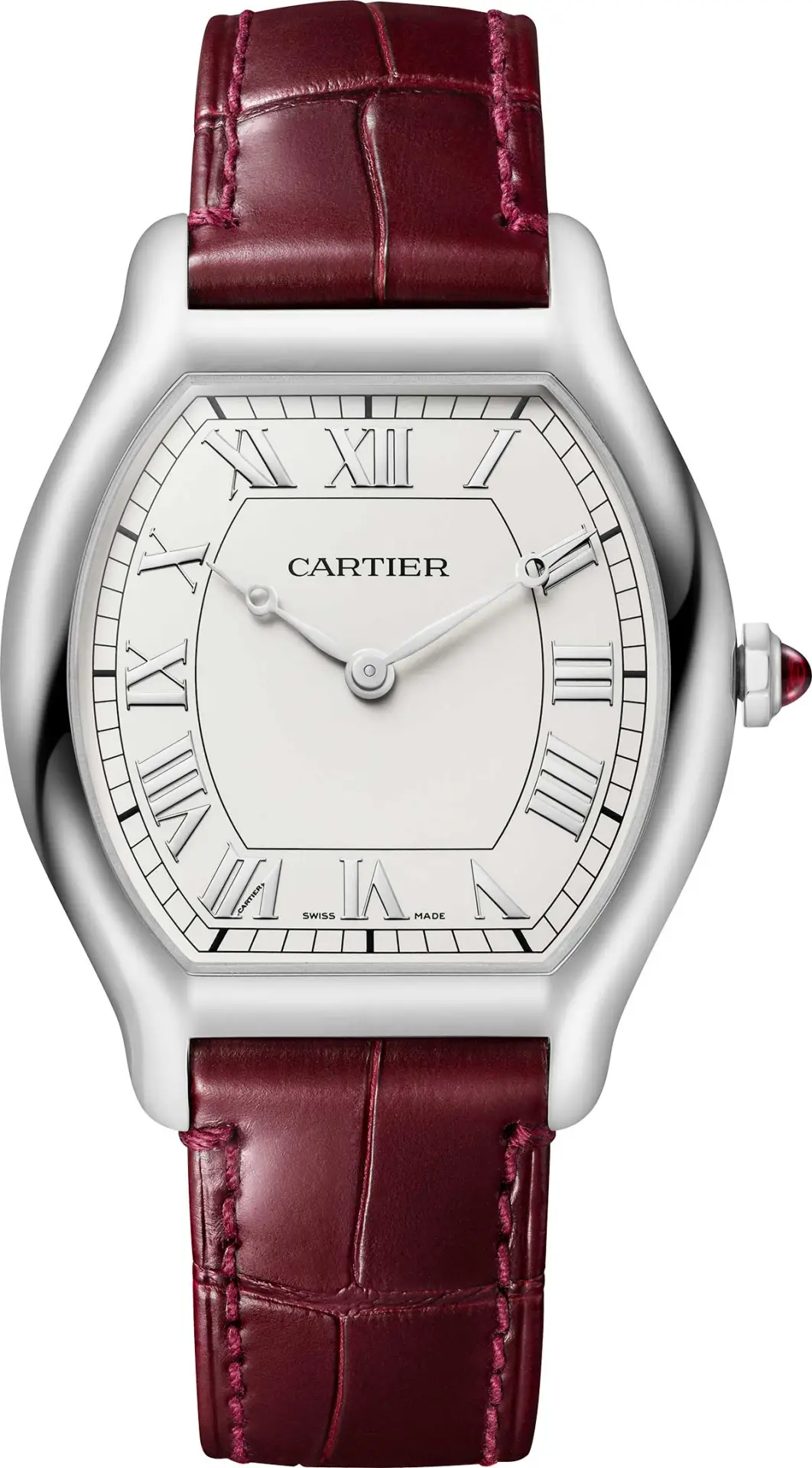
Indeed, the Parisian horological roots run deep, but it’s not all Cartier. From Louis Erard’s whimsical collaboration with French interior-designer-turned-watchmaker Alain Silberstein to the dreamy, avant-garde designs of Paris-based Trilobe, there’s something for everyone in this mix.
Of all the watches Cartier introduced at Watches and Wonders Geneva this year, the Tortue re-edition was the most talked-about. Even older than the Tank, the tortoise-shaped model (born in 1912) is now available in a monopusher chronograph as well as the simpler “hours and minutes” platinum version shown here. Limited to 200 pieces, the stylish and shapely Tortue, which comes out in September, makes clear that even though Cartier manufactures all of its watches in Switzerland, the Paris-based brand is French to its core. $54,770.
Breguet Classique Double Tourbillon “Quai de l’Horloge” 5345
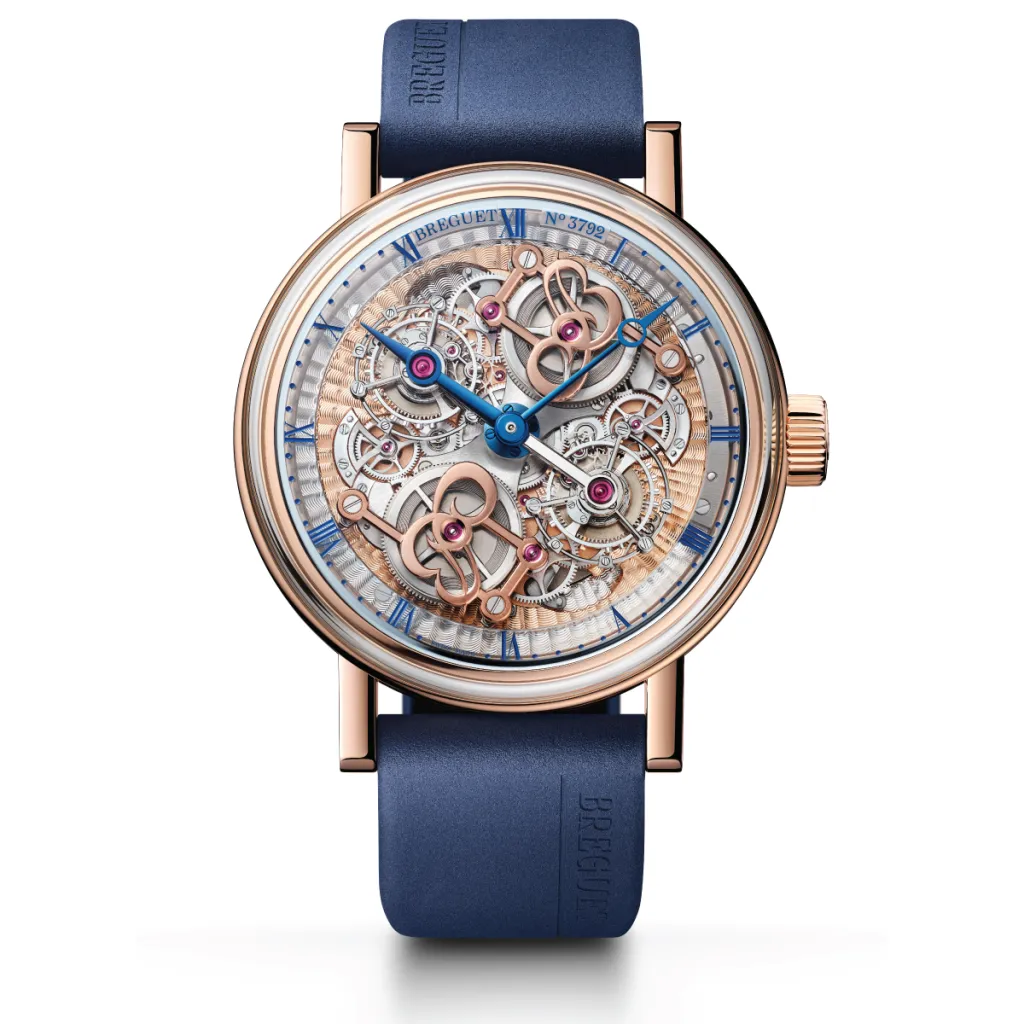
Although Breguet is now based in Switzerland, its namesake, Abraham-Louis Breguet, inventor of the tourbillon as well as the now-ubiquituous Breguet hands and numerals, made his mark on horology in Paris, where he maintained a workshop at 39 Quai de l’Horloge. The brand pays tribute to that history with its latest tourbillon, a 46 mm rose gold wristwatch equipped with not one, but two of the whirling mechanisms. Be sure to admire the engraving on the back of the movement, which depicts an aerial view of the workshop. C’est magnifique! Price on request.
Trilobe Les Matinaux L’Heure Exquise Dune Edition
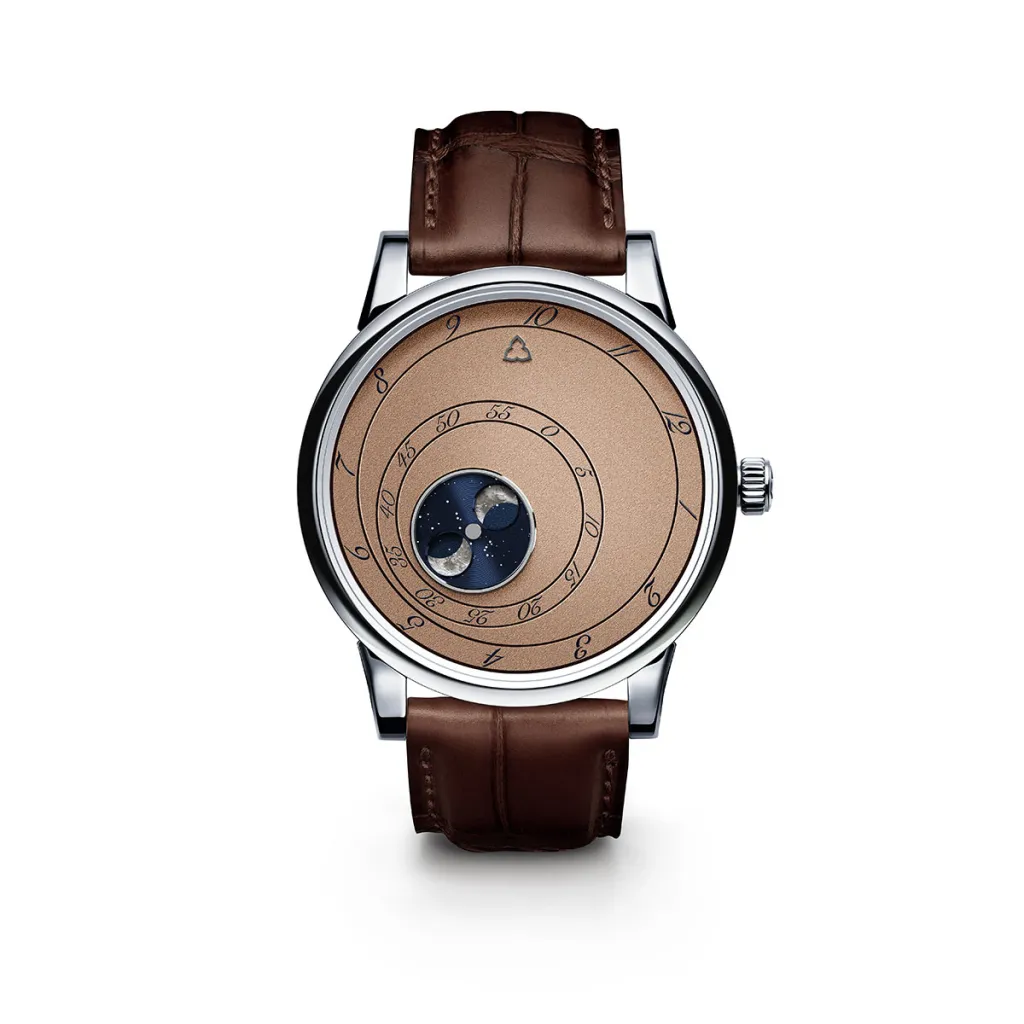
In 2018, Paris-based Trilobe introduced its Les Matinaux (“The Morning”) collection, and with it, a new way of telling the time. Employing a wandering display, the watch used three discs that rotated counterclockwise and three fixed pointers to indicate the hours, minutes and seconds. Named after a collection by the midcentury French poet René Char, the series recently spawned a new sand-colored Dune edition that marks the brand’s entrée into the world of complications. Limited to 100 pieces, the model, dubbed L’Heure Exquise (“The Exquisite Hour”), features a moonphase complication that evokes the orbit of the Moon around the Earth against the backdrop of a starry night sky. $21,995
Chanel Monsieur de Chanel Édition Superleggera Intense Black
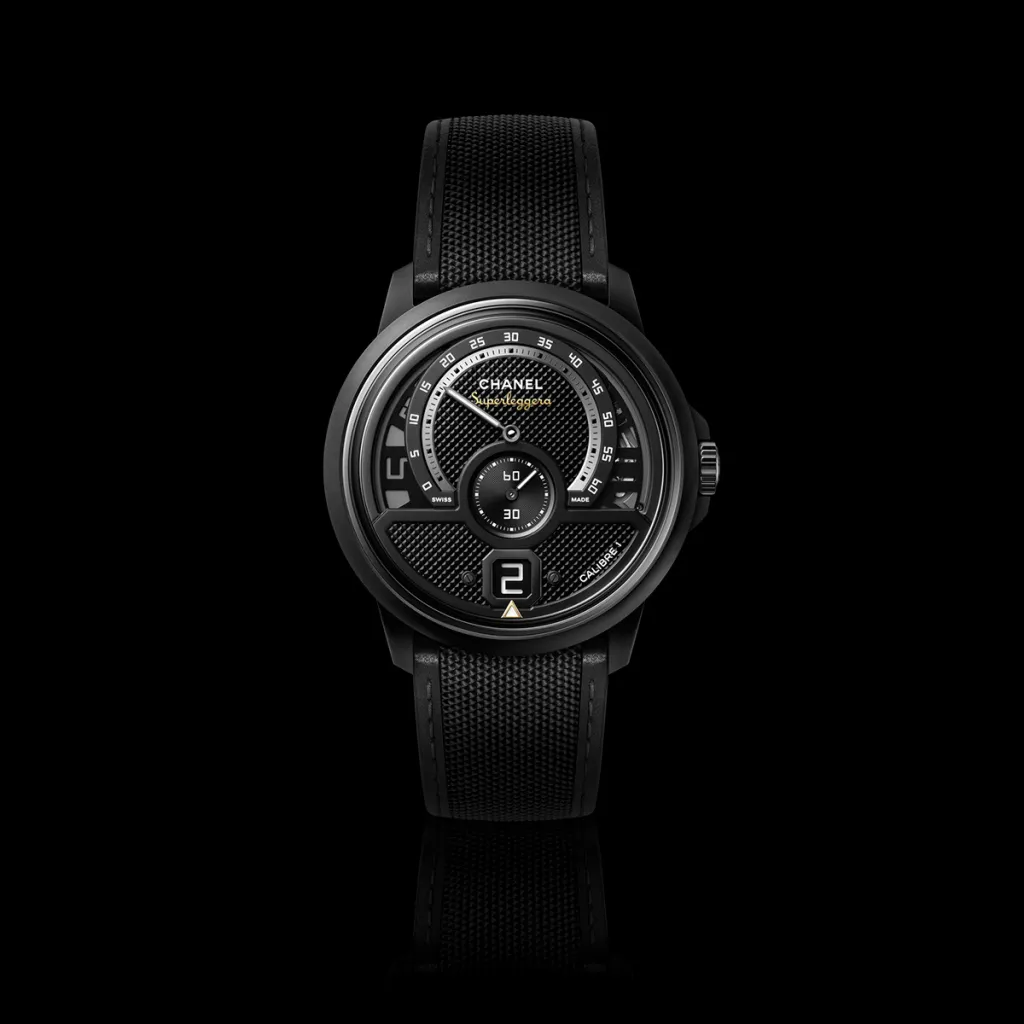
Arguably the Frenchiest brand on our list, Chanel made a name for itself as a high-end (as opposed to fashion) watchmaker in 1999, when it introduced its signature timepiece, the J12 (in unusual-for-the-time ceramic, no less). At Watches and Wonders Geneva in April, the brand upped the ante with its latest Monsieur timepiece, the Superleggera Intense Black, a limited edition of 100 pieces inspired by car racing. Housed in a matte black ceramic and steel case, the watch features a matte black guilloché dial and comes on a black nylon strap with black calfskin leather trim and lining. $69,651
Hermès Arceau Grand Tralala Brides et Mors
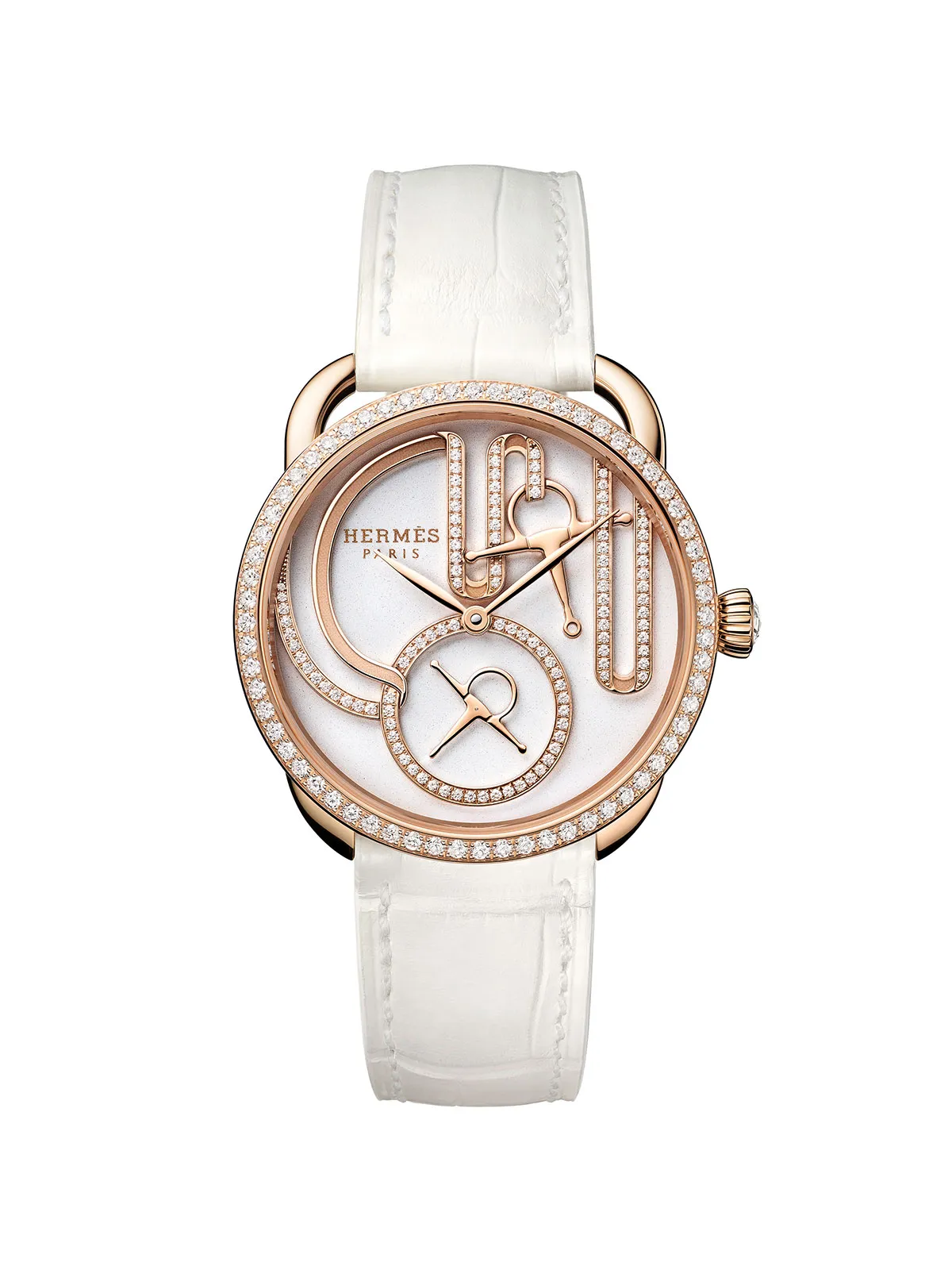
Like so many of Hermès’s most sought-after watches, the new 34 mm Arceau Grand Tralala Brides et Mors traces its design to another Hermès product, in this case the Grand Tralala silk scarf created by French artist Virginie Jamin. Patterned after the prestigious harnesses worn by the Royal Hungarian Bodyguard in the 19th century, the graphic design evokes the look of intertwined bridles and bits within a rose gold frame. Note the bit-shaped seconds hand! $72,172
Louis Erard x Alain Silberstein Smile-Day
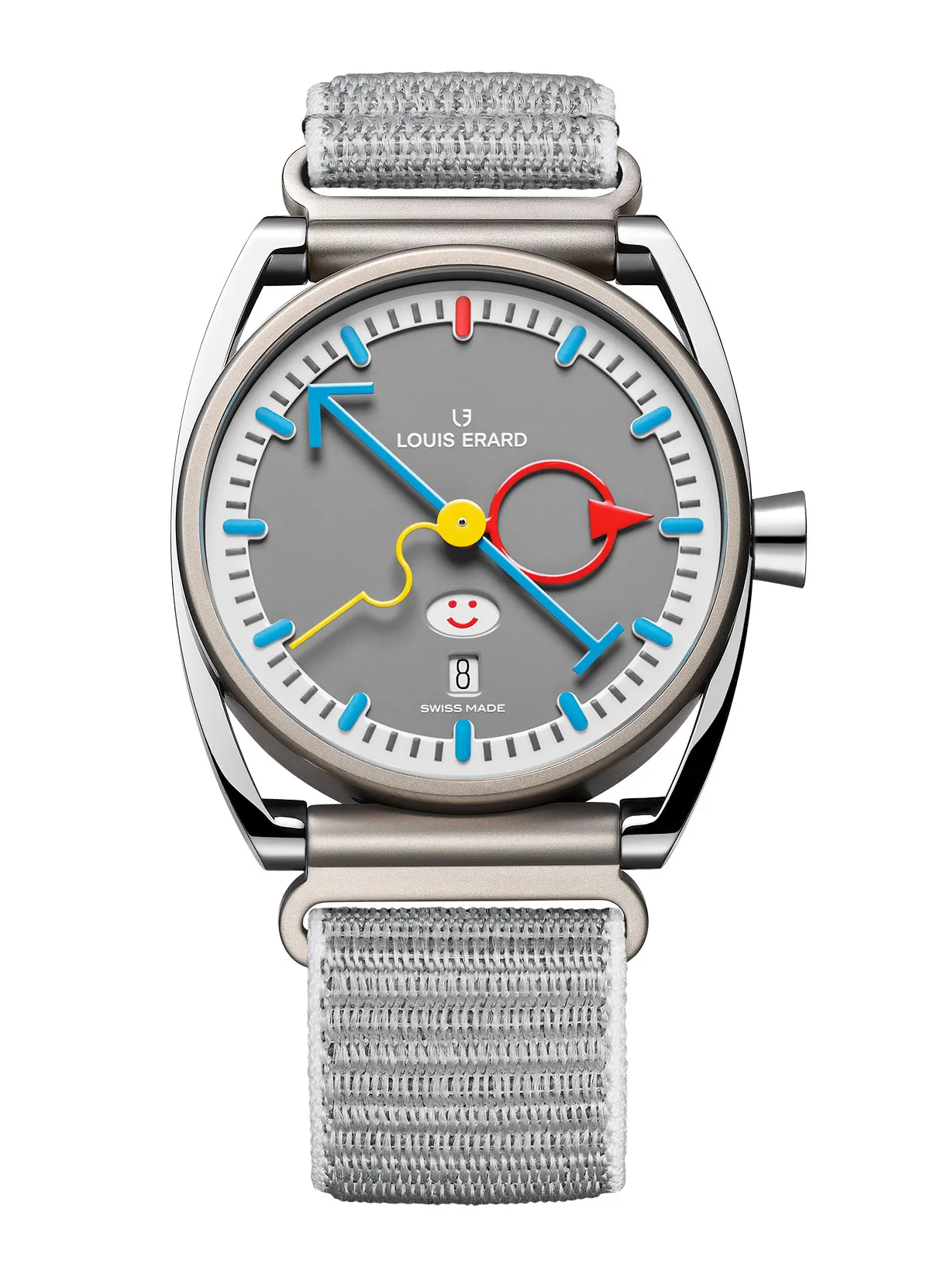
Imagine if Rolex’s much-talked-about emoji watch of 2023 had a child with the Memphis Group, a collective of Milan-based architects and designers who became known in the 1980s for their use of bright primary colors and bold patterns. That’s a quick way to describe the new 40 mm Smile-Day limited edition in titanium from Swiss watchmaker Louis Erard, whose latest collaboration with the iconoclastic French watchmaker Alain Silberstein reflects his signature whimsy. Silberstein was trained in graphic design and architecture in Paris by former members of Germany’s Bauhaus faculty, and he takes his whimsy very seriously. Between the aperture at six o’clock featuring a sliding carousel of seven emojis, the yellow squiggly seconds hand and the nostalgic color scheme, the piece is an instant classic. $8,019
Louis Vuitton Escale
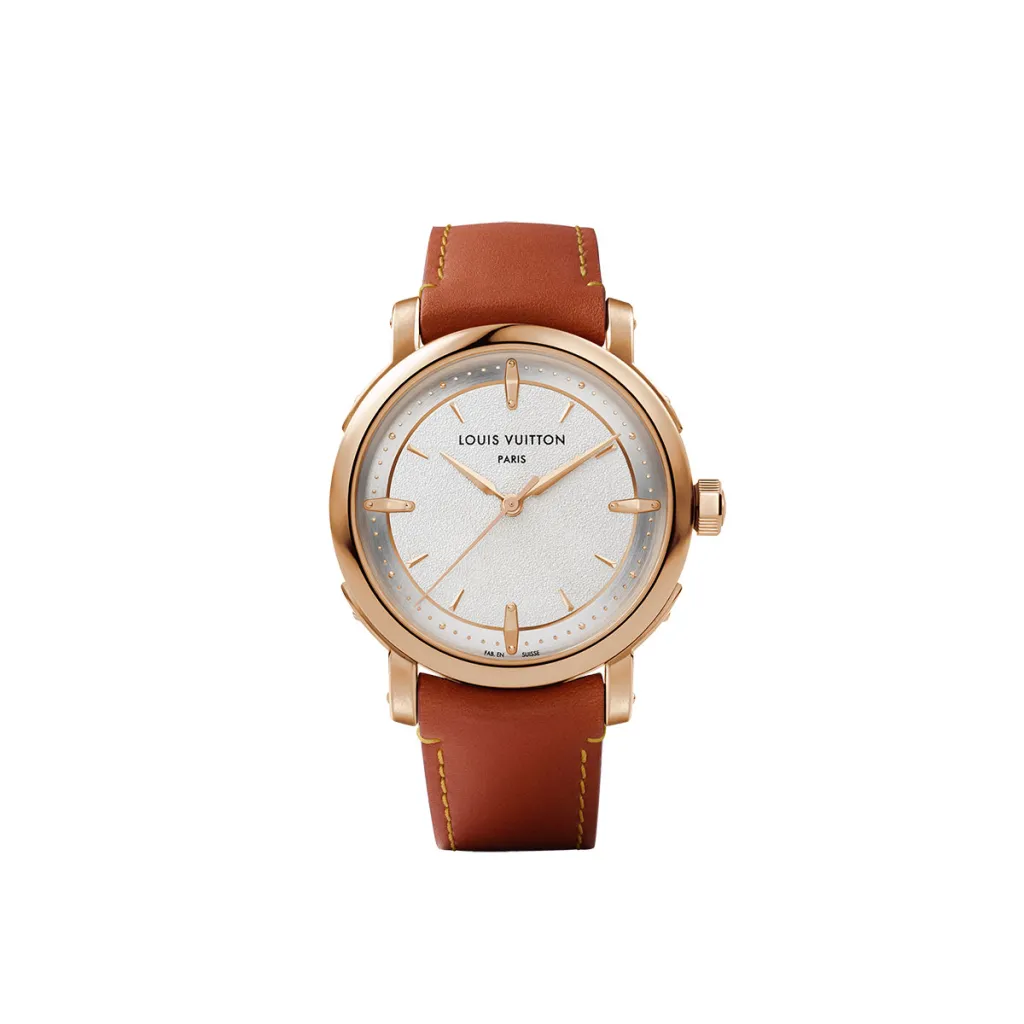
The dress watch revival continues with the new Escale by Louis Vuitton, an elegant timepiece honoring the 10th anniversary of the Escale collection (its first time-only, three-hand watch). Of the four new models in the line, two come in rose gold (like the 39 mm automatic model shown here), while the other two come in platinum. The former feature textured dials designed to evoke the suppleness and tactility of the Louis Vuitton Monogram canvas on metal. Equipped with a chronometer-certified movement with 50 hours of power reserve, the rose-gold Escale comes on a calf-leather strap. In a press release, the brand made sure to emphasize the model’s roots: “Just below the 12 o’clock hour marker, under the Louis Vuitton logo, is one word that encapsulates everything there is to be known about the Escale’s creative rebirth: Paris.” $40,324
Bell & Ross BR 03 Diver Full Lum
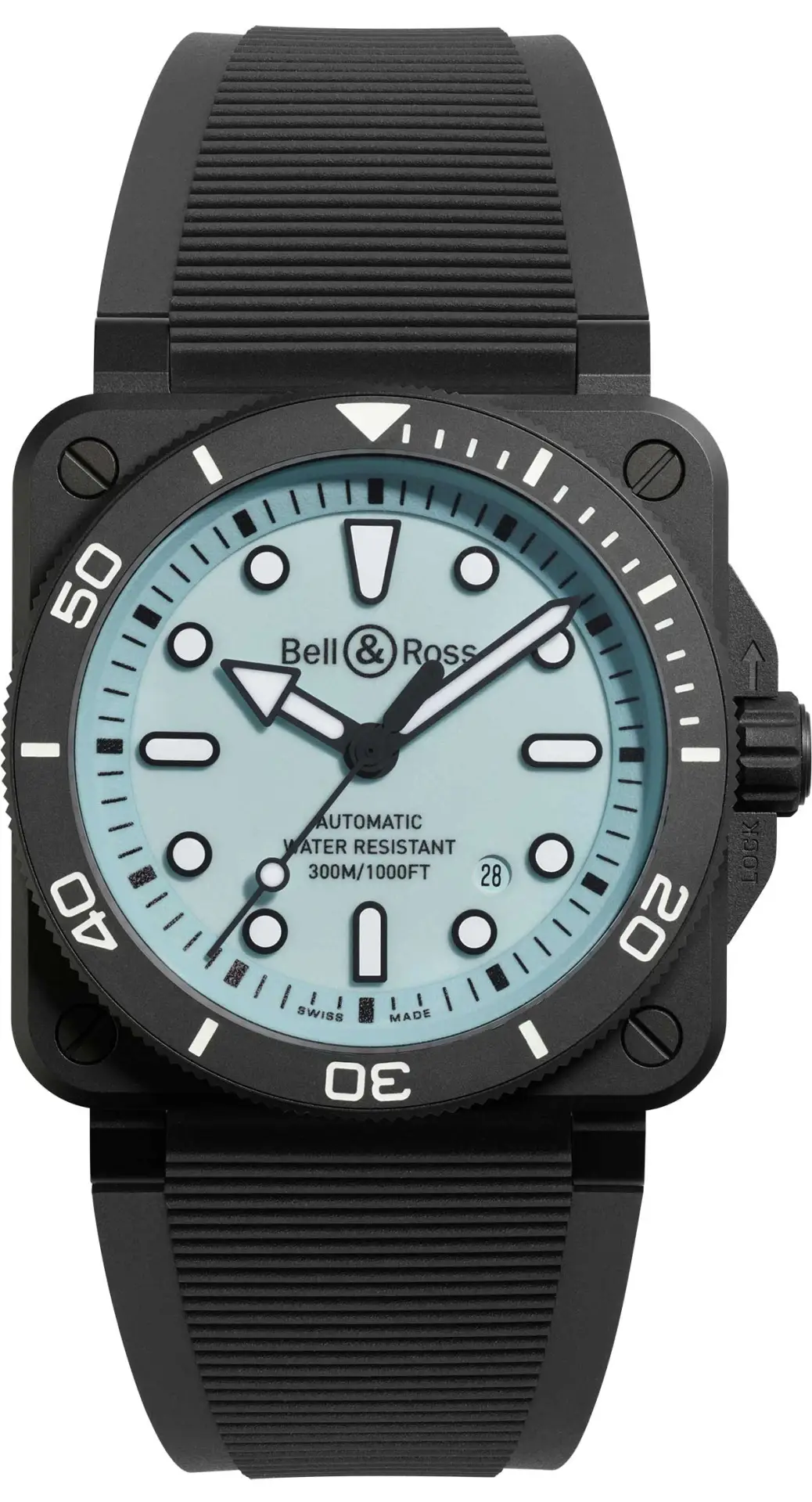
The BR03 Diver from Paris-based Bell & Ross celebrates its seventh anniversary this year. Recognised as the first square diving watch, the 2024 edition is new in more ways than one. Composed of five new models, including the full lume version with a pale blue dial shown here, the series is equipped with an improved automatic movement boasting 54 hours of power reserve, new typography, redesigned hands for optimal legibility and a new adaptable strap. $8,248
You may also like.
How Paris’s Dining, Hotel and Art Scene Got Their Groove Back — Just in Time for the Olympics
The French capital’s cultural life was already on the upswing. Mix in a major global sporting event, and it’s now ready to go toe to toe with any city in the world.
Host cities of modern-day Olympic Games have gotten into the competitive spirit by trying to stage the most spellbinding, over-the-top opening ceremony on record. Beijing enlisted 2008 drummers. London featured James Bond escorting Queen Elizabeth II. All Rio needed to wow the crowd was Gisele, who turned the stadium into her personal catwalk, strutting the length of the field solo. But only Paris could make the unprecedented gamble that the city itself is spectacular enough to be the star of the show.
If all goes according to plan when the Summer Olympics alight in Paris this July, the opening ceremony will play out like a Hollywood epic: timed to coincide with the sinking of the sun, an open-air flotilla of boats will ferry the athlete delegations on the Seine, sailing toward the sunset as hundreds of thousands of spectators cheer from either side of the river’s banks and the bridges above, all bathed in the amber afterglow.
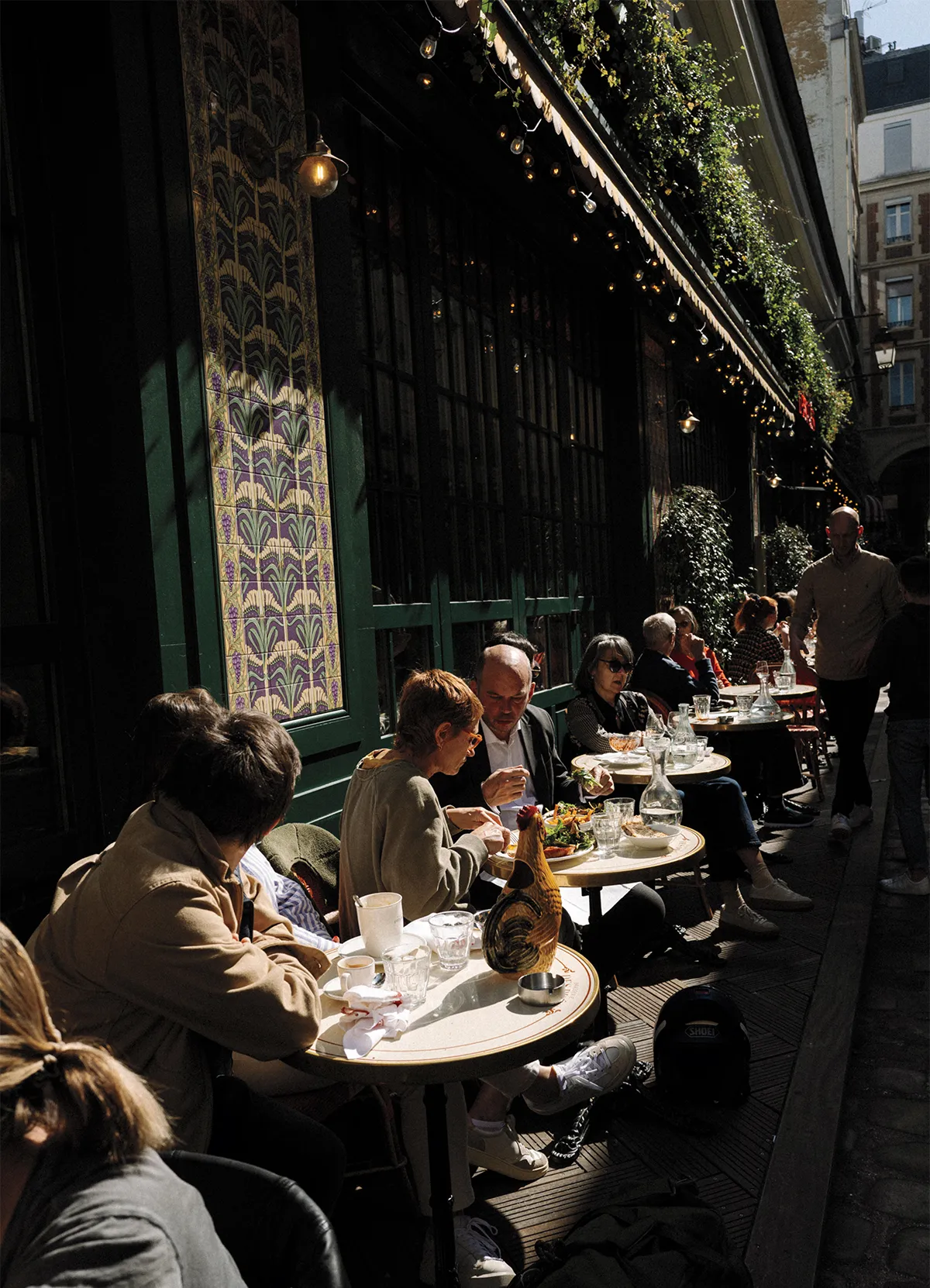
Nico Therin
It will mark the first time the ceremony will be held outside a stadium, let alone on a waterway. So too many of the events themselves, instead of being mounted in mostly generic stadiums on the outskirts of the city, will take place in the heart of Paris, reframing the French capital in a way that locals and visitors alike have never experienced—and that’s sure to dial up the promise of pageantry and emotion.
The Eiffel Tower’s latticed silhouette will serve as the backdrop for beach volleyball at Champs de Mars. Place de la Concorde, where more than a thousand people (including Louis XVI and Marie Antoinette) had their heads lopped off during the French Revolution, will be the site of newly admitted Olympic sports such as skateboarding and breakdancing. And though Olympic swimmers have raced in pools since 1908, this year’s athletes are slated to compete in the river itself. (Competitions will also take place in cities across France, from Lyon to Marseille, and Tahiti in French Polynesia will host the surfing event.)
The specs are ambitious and inventive, and in some ways could restore the city’s reputation for audacity. Because while the City of Light may be known as the cradle of fashion, culture and gastronomy, not too long ago it was also regularly accused of slipping into a lazy, even smug, complacency—stuck in its ways, resting on the laurels of its storied past.
In the food world, those doldrums translated into controversial snubs from the influential World’s 50 Best Restaurants list, known for flushing out avant-garde chefs. The French Michelin Guide, once considered the ultimate arbiter of fine dining, suddenly seemed staid and irrelevant. London and Berlin took Europe’s centre stage in art and design. Even President Emmanuel Macron described his fellow countrymen as resistant to change, much to the ire of those fellow countrymen—and countrywomen.
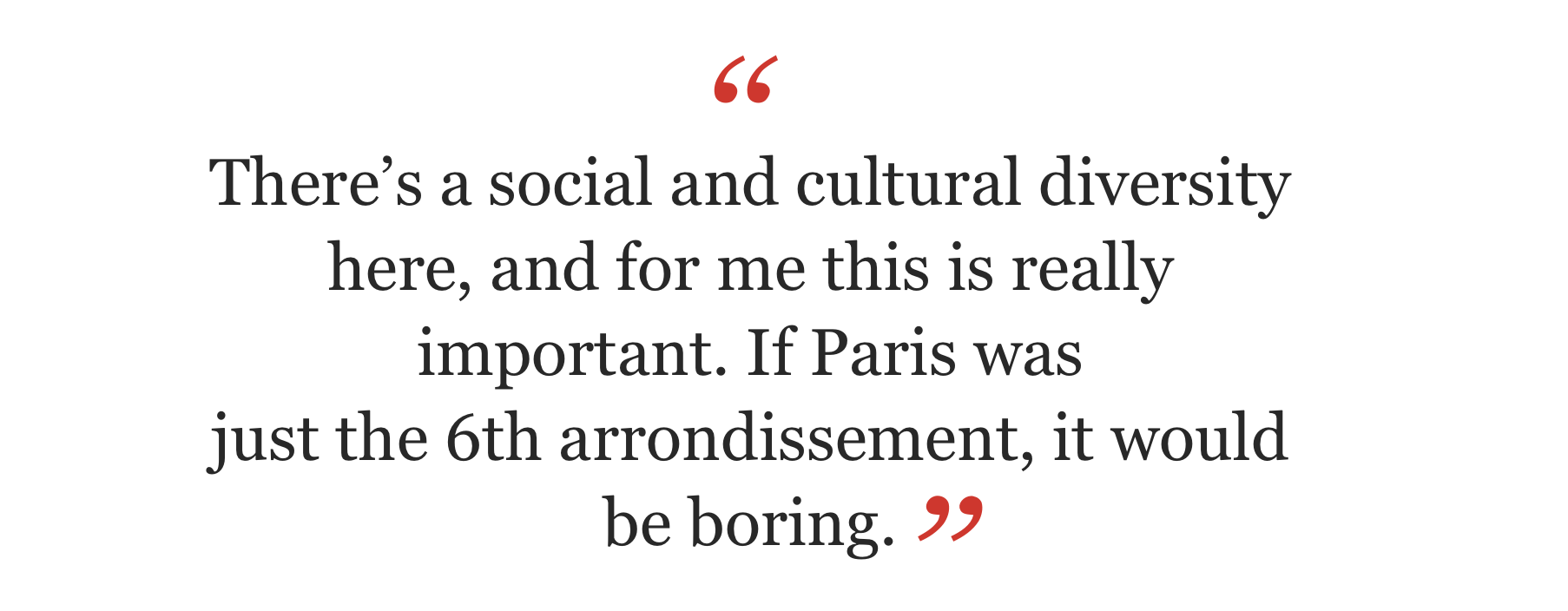
But influential creatives and Parisians say that in the years leading up to the Games, and particularly since the pandemic, something has shifted. “I really think that during the last 10 years, Paris opened itself to more new things, for different trends,” says Hélène Darroze, the acclaimed chef whose six restaurants include Michelin two-star Marsan in Paris and her three-star namesake at The Connaught in London. “Paris is happier than before, more joyful than before.”
There’s a giddy sense of anticipation, says the illustrator Marin Montagut, who has collaborated with Le Bon Marché and the Ritz Paris and owns an eponymous boutique in Saint-Germain-des-Prés where he sells hand-painted glassware and porcelain decor. “It feels like Paris is trying to look very, very pretty for a very important evening. She’s been getting some plastic surgery and is trying to get ready in time,” he says with a chuckle. “There’s just a lot of effervescence in the city.”
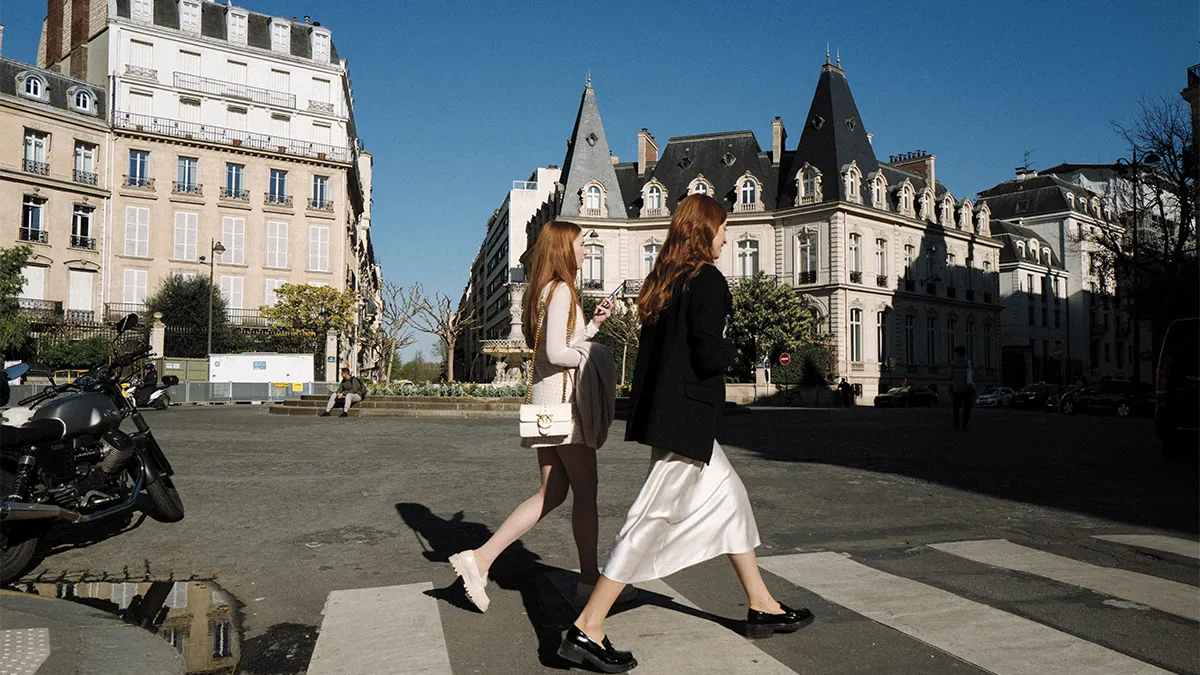
Nico Therin
For better or for worse, some of the credit for that renewed vitality belongs to the light-as-soufflé Netflix series Emily in Paris, which quickly became the collective escapist fantasy for viewers around the world who were grounded by the Covid-19 virus. Another part of that newfound energy, though, can be traced to the frenzied building of luxury hotels, restaurants, galleries, museums and boutiques over the past few years, including Montagut’s own Paris-themed shop, which he opened in 2020.
In the past three years alone, 25 new five-star hotels debuted across the city, bringing the total to 101. Noteworthy newcomers include Madame Rêve, Kimpton St. Honoré Paris, Château des Fleurs, Maison Proust, LVMH’s Cheval Blanc Paris, and Chopard’s first boutique hotel here, 1 Place Vendôme. The dual autumn 2023 openings of Le Grand Mazarin and La Fantaisie hotels marked the Paris debut of Swedish designer Martin Brudnizki, whose playfully modern, maximalist and flamboyant aesthetic injected colour and character into Paris’s elite hotel scene.
In parallel with the growth of traditional hotels, new players in the luxury rental market are emerging, joining the likes of Le Collectionist and Belles Demeures. Founded in 2020, Highstay rents out luxury serviced apartments equipped with kitchens and living spaces. The firm’s current portfolio includes 36 apartments in areas such as the Champs-Élysées and Saint-Honoré, and another 48 are under construction—all of which it owns. There is no check-in (guests are sent digital access codes) and all concierge requests, including housekeeping and travel reservations, are made via live chat on a dedicated guest portal. “The goal is that guests get the real Parisian experience and feel like an insider, like a city dweller,” says general director Maxime Lallement.
The idea of making Paris as welcoming as a second home is also what drives the luxury real-estate market for foreign buyers, particularly Americans, says Alexander Kraft, CEO of Sotheby’s International Realty France-Monaco. He sees 2024 as a “transition year” and says that the local market is moving at two different speeds: while demand for properties between roughly $1.5 million and $8.5 million has cooled, high-end properties between about $17 million and $85 million continue to sell fast among buyers from the Middle East. Kraft predicts the market will pick up in 2025 following the US presidential election. “Paris is one of those real-estate markets that is eternally popular,” he says. “Contrary to other international cities, it really has broad appeal.”
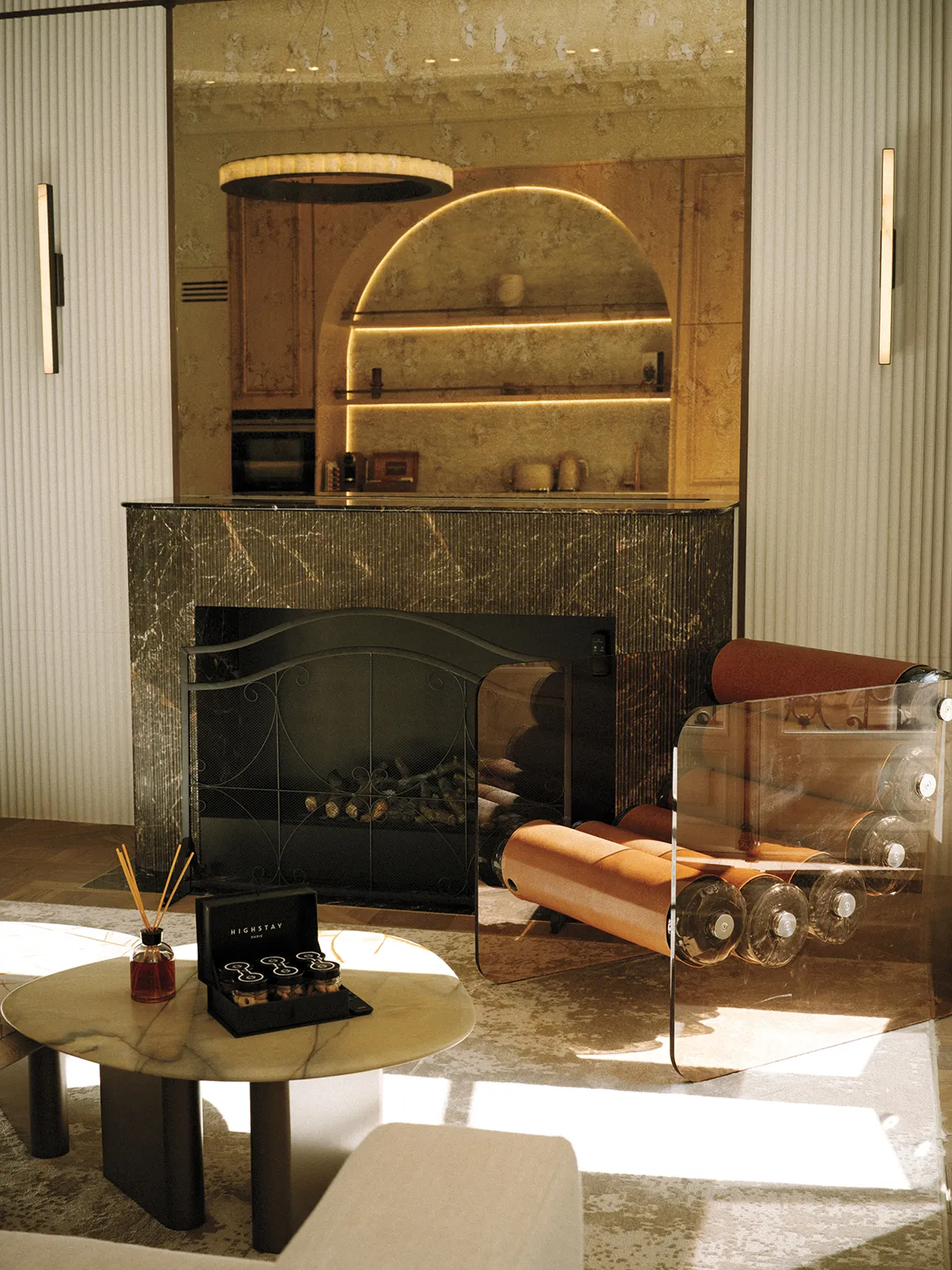
Nico Therin
Montreal-born, New York–based interior designer Garrow Kedigian is one of those frequent visitors who decided to take the leap and buy his own pied-à-terre in Paris a few years ago, after a lifetime of travelling back and forth for both work and pleasure.
As a part-time resident, Kedigian says he too has noticed a palpable shift in the city’s vibe, which he attributes to a renewed appreciation for tourists following their absence during the pandemic, as well as an “international flair” that has given the city a fresh spark. “There’s a lot more cultural diversity than there was before,” he says. “In that respect it’s a bit like New York. And I think that now the interface between Paris’s unique flavour and the international populace is a little bit smoother.”
For Montagut, one of the best examples of this synergy can be found in Belleville, in the city’s east end, where independent artists, musicians and other urban creatives rub shoulders in Chinese, African, and Arab restaurants and businesses. “There’s a social and cultural diversity here, and for me this is really important,” Montagut says. “If Paris was just the 6th arrondissement, it would be boring.”
The eastern edge of Paris is also one of the preferred neighbourhoods of Michael Schwartz, the marketing and communications manager for Europe at French jewellery house Boucheron. A recent New York City transplant, he is drawn to the burgeoning number of gastronomic gems far from the madding tourist crowds.

Nico Therin
He points to sister restaurants Caché and Amagat (the names mean “hidden” in French and Catalan, respectively), discreetly located at the end of a cobblestoned cul-de-sac, as favourites. With backgrounds in fashion and advertising, the Italian duo who run them have attracted equally fashionable locals to this hitherto quiet part of town. Caché serves up fresh Mediterranean seafood dishes, while next door, Amagat specialises in Catalan tapas.
Then there’s Soces, a corner seafood bistro on rue de la Villette, where you might find Jean-Benoît Dunckel, who co-wrote the score to Sofia Coppola’s film The Virgin Suicides when he was part of the electronic-music duo Air (Dunckel’s recording studio is in the area), or the French designers behind the Coperni fashion line, Sébastien Meyer and Arnaud Vaillant. “This is a really special restaurant,” says Schwartz. “It’s frequented by really cool creatives, designers and musicians, and it’s kind of a destination restaurant for most people because it’s not central.”
What makes Paris’s dining scene so exciting now, according to Stéphane Bréhier, editor in chief of French restaurant guide Gault& Millau, is a sense of fearlessness among younger chefs who reject the traditional trajectory that begins with a lowly stage in a Michelin-star kitchen. What’s more, visitors are likewise foregoing Michelin establishments in favour of newer, more experimental dining spots. “Over the last few years, there’s been a profusion of young chefs who don’t want to work for other people and are daring to set up their own shop,” Bréhier says. “The gastronomic scene is booming in Paris.”
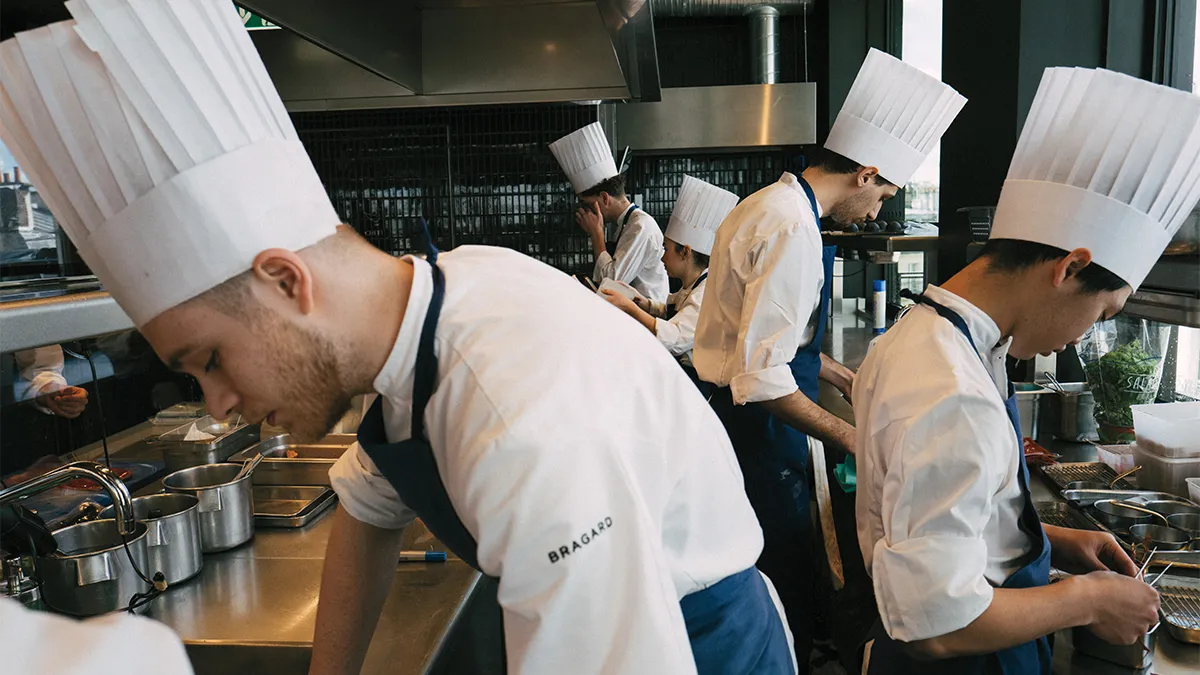
Nico Therin
These bold, emerging chefs feel less bound not only to their elders but also to French cuisine itself. “It has changed a lot,” says Hélène Darroze, who opened Marsan, her first Parisian restaurant, 25 years ago. “The new generation travelled a lot—in South America, for example, in Asia—before opening a restaurant or being a head chef somewhere. They opened themselves to other cultures. This is why the culinary scene at the moment is very interesting in Paris; because it’s a mix of very famous chefs with Michelin stars but also young chefs who don’t care about Michelin stars—they just want to explore so many fields.”
The ever-growing importance of social media and its insatiable hunger for envy-inducing images is driving another major trend in the dining scene: rooftop spots, including Mun and Girafe in the Golden Triangle, the area bordered by avenues Montaigne and George V and the Champs-Élysées. “A lot of rooftops have opened in Paris, where before they were pretty much nonexistent apart from the Eiffel Tower and the Montparnasse Tower,” says Dimitri Ruiz, head concierge at Hôtel Barrière Fouquet’s Paris on the Champs-Élysées.
Five-star Right Bank hotels SO/ and Cheval Blanc Paris have watering holes that offer sweeping vistas of the Seine. But perhaps the most coveted perch during the opening ceremony will be the Champagne bar at La Tour d’Argent restaurant, which boasts unobstructed views of the Notre-Dame Cathedral and the Seine. (And yes, someone already had the idea to book it for a private event.) Famous for its signature pressed duck as well as for hosting monarchs and heads of state, the historic restaurant recently underwent a major renovation that included the addition of the aerie, which opened late last summer. “It’s only been in the last 10 years or so that Paris has been developing rooftops, and it’s really taking off like wildfire,” says third-generation owner André Terrail.
Paris’s venerated fashion industry has also found ways to innovate, with fresh faces keeping their fellow couturiers on their toes and the shopping options enticing. In 2022, for example, Simon Porte Jacquemus opened his first boutique in the city on avenue Montaigne—home to Gucci, Chanel, and Prada, among other venerable names—and in March, at the age of 34, became France’s youngest fashion designer to be named a Chevalier de l’Ordre des Arts et des Lettres for his contributions to the field. That kind of success has a ripple effect in the creative community.
“Almost every street has the name of an artist or a politician,” says Charaf Tajer, the Parisian-born creative director behind the London-based Casablanca sportswear line. “So the city reminds me always that the people who came before me, who walked those streets, created the future in a way. As much as [Paris] seems stuck in time visually, you can also feel the energy of people creating the present.”
Interior designer David Jimenez, whose 2022 book Parisian by Design compiles his Francophile projects, moved to the city in 2015 and spent his first few years living near the Champs-Élysées, which he says has undergone a noticeable revival. Along with Jacquemus’s arrival, new luxury openings or expansions—including Burberry, Saint Laurent, Bottega Veneta, and Panerai—and city-led greening efforts are bringing Parisians back to the 8th arrondissement, long dismissed as an overcrowded tourist trap where fast-food and fast-fashion chains had colonised the once glamorously luxe avenue. Now, Dior’s captivating Peter Marino–designed museum draws legions of fans, while the city has been busy planting more trees, renovating gardens and repairing damaged sidewalks as part of a long-term embellishment plan. And on the first Sunday of every month, the entire length of the Champs-Élysées becomes a pedestrian-only promenade. “It’s an exciting evolution in a part of the city that seemed sleepy and perhaps lost its way a little bit,” Jimenez says. “Now there’s a thrust forward.”
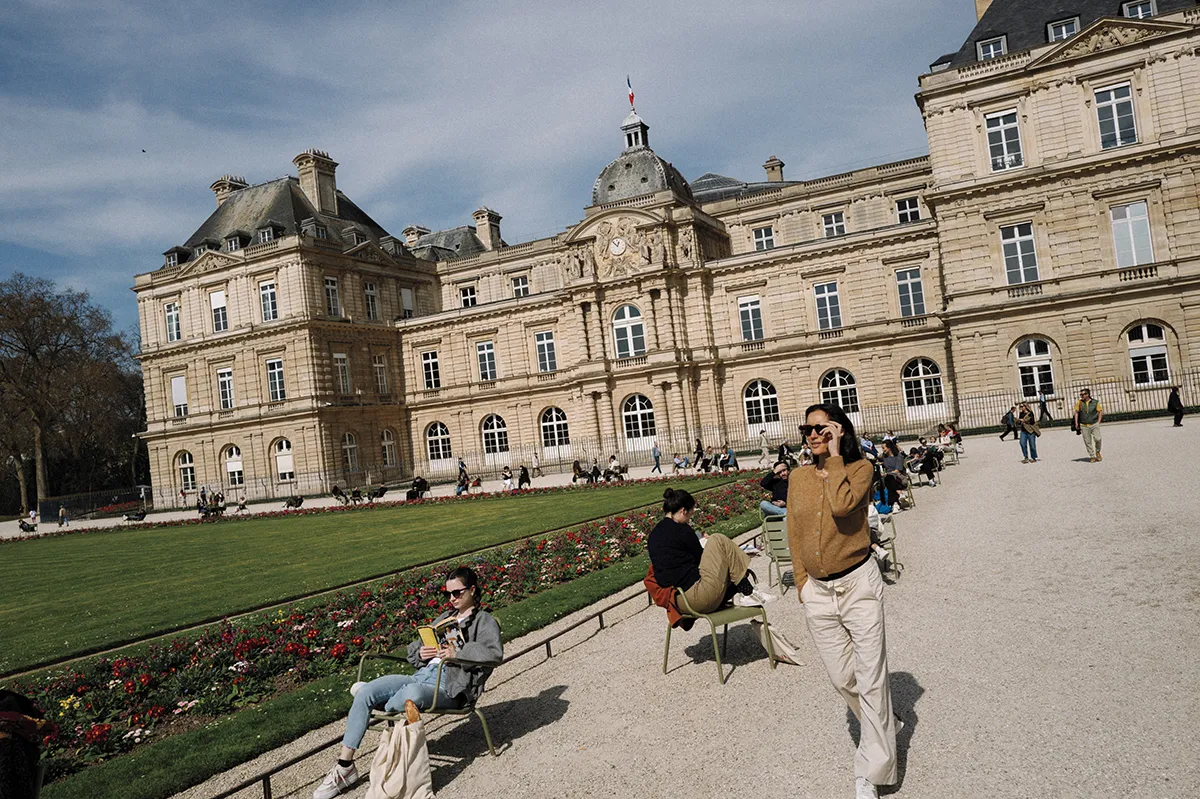
Nico Therin
The thriving fashion houses are responsible for more than maintaining the city’s unparalleled reputation for chic. To a large degree, they have also helped revive its status as an art capital. The billions generated by LVMH (parent of Louis Vuitton, Dior and Berluti, among others) and Kering (Alexander McQueen, Gucci, Bottega Veneta, et al.) funded the extraordinary contemporary art collections amassed by their founders, Bernard Arnault and François Pinault, respectively. The rivals rewarded their hometown with two museums, Fondation Louis Vuitton and Bourse de Commerce, that have helped make it a leader in contemporary art.
Also lending a hand: Brexit, which persuaded many international galleries to brush up on their French. One of the most talked-about recent additions is the powerhouse Hauser & Wirth, which opened in a 19th-century hôtel particulier near the Champs-Élysées last year. David Zwirner arrived in 2019, Mariane Ibrahim in 2021, and Peter Kilchmann the following year, all joining long-established Parisian galleries including Perrotin and Thaddaeus Ropac. The City of Light even snagged its own coveted annual installment of Art Basel: Paris+, which now runs every October in the Grand Palais.
“Quite frankly, Paris has been putting up some of the most incredible exhibitions in institutions in Europe,” says Serena Cattaneo Adorno, senior director at Gagosian. “And a lot of private collectors have also decided to open spaces in the city, creating a great dynamic between public and private galleries.”
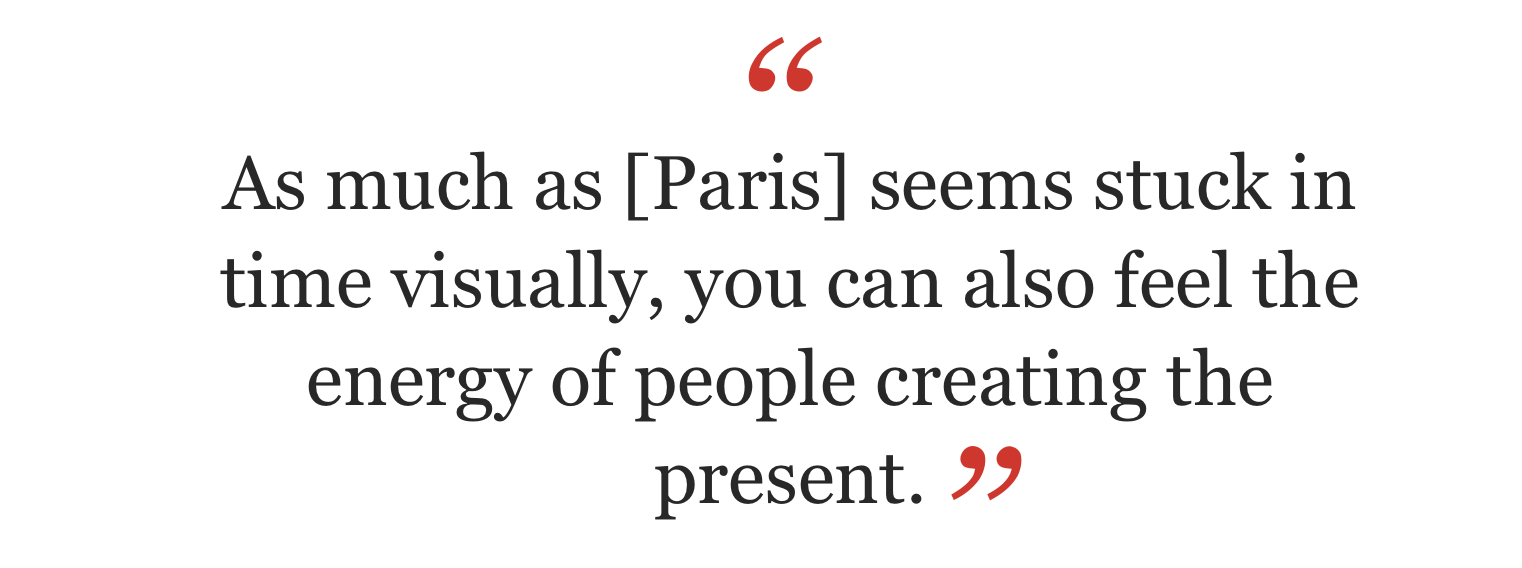
The always-savvy Gagosian, on rue Ponthieu, has hit upon an authentic tie-in with the Games: a summer exhibition featuring Olympic posters created over the years by celebrated artists from Picasso on up to Warhol, Hockney and Tracey Emin. “Once you start digging, you find that a lot of artists have reflected on sports and the engagement of the body,” Cattaneo Adorno says. “It’s just a really pure and beautiful message about how art and sports have dialogues that can be somewhat surprising.”
A few months out from the festivities on the Seine, interior decorator Jimenez sums up the mood of many locals, saying (only half-jokingly), “I think for most Parisians, there’s a sense of curiosity, optimism, excitement—and an exit plan, in that order.”
While polling shows that nearly half of Parisians intend to vacate the city during the games, Jimenez notes that he will be watching the opening ceremony with friends who live in an apartment overlooking the Seine. “I want to be part of the excitement. I want to see as much as I can and be energised by this very special and unique moment,” he says. “It’s a once-in-a-lifetime opportunity, and I am deeply grateful to be able to experience it first-hand as an American living in Paris.”
Additional reporting by Lucy Alexander and Justin Fenner.
You may also like.
Watches & Wonders 2024 Showcase: Hermès
We head to Geneva for the Watches & Wonders exhibition; a week-long horological blockbuster featuring the hottest new drops, and no shortage of hype.
With Watches & Wonders 2024 well and truly behind us, we review some of the novelties Hermès presented at this year’s event.
—
HERMÈS

Moving away from the block colours and sporty aesthetic that has defined Hermès watches in recent years, the biggest news from the French luxury goods company at Watches & Wonders came with the unveiling of its newest collection, the Hermès Cut.
It flaunts a round bezel, but the case middle is nearer to a tonneau shape—a relatively simple design that, despite attracting flak from some watch aficionados, works. While marketed as a “women’s watch”, the Cut has universal appeal thanks to its elegant package and proportions. It moves away from the Maison’s penchant for a style-first product; it’s a watch that tells the time, not a fashion accessory with the ability to tell the time.
Hermès gets the proportions just right thanks to a satin-brushed and polished 36 mm case, PVD-treated Arabic numerals, and clean-cut edges that further accentuate its character. One of the key design elements is the positioning of the crown, boldly sitting at half-past one and embellished with a lacquered or engraved “H”, clearly stamping its originality. The watch is powered by a Hermès Manufacture movement H1912, revealed through its sapphire crystal caseback. In addition to its seamlessly integrated and easy-wearing metal bracelet, the Cut also comes with the option for a range of coloured rubber straps. Together with its clever interchangeable system, it’s a cinch to swap out its look.
It will be interesting to see how the Hermès Cut fares in coming months, particularly as it tries to establish its own identity separate from the more aggressive, but widely popular, Ho8 collection. Either way, the company is now a serious part of the dialogue around the concept of time.
—
Read more about this year’s Watches & Wonders exhibition at robbreport.com.au
You may also like.
Watch This Space: Mike Nouveau
Meet the game-changing horological influencers blazing a trail across social media—and doing things their own way.
In the thriving world of luxury watches, few people own a space that offers unfiltered digital amplification. And that’s precisely what makes the likes of Brynn Wallner, Teddy Baldassarre, Mike Nouveau and Justin Hast so compelling.
These thought-provoking digital crusaders are now paving the way for the story of watches to be told, and shown, in a new light. Speaking to thousands of followers on the daily—mainly via TikTok, Instagram and YouTube—these progressive commentators represent the new guard of watch pundits. And they’re swaying the opinions, and dollars, of the up-and-coming generations who now represent the target consumer of this booming sector.
—
MIKE NOUVEAU

Can we please see what’s on the wrist? That’s the question that catapulted Mike Nouveau into watch stardom, thanks to his penchant for highlighting incredibly rare timepieces across his TikTok account of more than 400,000 followers. When viewing Nouveau’s attention-grabbing video clips—usually shot in a New York City neighbourhood—it’s not uncommon to find him wrist-rolling some of the world’s rarest timepieces, like the million-dollar Cartier Cheich (a clip he posted in May).
But how did someone without any previous watch experience come to amass such a cult following, and in the process gain access to some of the world’s most coveted timepieces? Nouveau admits had been a collector for many years, but moved didn’t move into horology full-time until 2020, when he swapped his DJing career for one as a vintage watch specialist.
“I probably researched for a year before I even bought my first watch,” says Nouveau, alluding to his Rolex GMT Master “Pepsi” ref. 1675 from 1967, a lionised timepiece in the vintage cosmos. “I would see deals arise that I knew were very good, but they weren’t necessarily watches that I wanted to buy myself. I eventually started buying and selling, flipping just for fun because I knew how to spot a good deal.”
Nouveau claims that before launching his TikTok account in the wake of Covid-19, no one in the watch community knew he existed. “There really wasn’t much watch content, if any, on TikTok before I started posting, especially talking about vintage watches. There’s still not that many voices for vintage watches, period,” says Nouveau. “It just so happens that my audience probably skews younger, and I’d say there are just as many young people interested in vintage watches as there are in modern watches.”
View this post on Instagram
Nouveau recently posted a video to his TikTok account revealing that the average price of a watch purchased by Gen Z is now almost US$11,000 (around $16,500), with 41 percent of them coming into possession of a luxury watch in the past 12 months.
“Do as much independent research as you can [when buying],” he advises. “The more you do, the more informed you are and the less likely you are to make a mistake. And don’t bring modern watch expectations to the vintage world because it’s very different. People say, ‘buy the dealer’, but I don’t do that. I trust myself and myself only.”
—
Read more about the influencers shaking up horology here with Justin Hast, Brynn Wallner and Teddy Baldassare.
You may also like.
5 Lounge Chairs That Add Chic Seating to Your Space
Daybeds, the most relaxed of seating solutions, offer a surprising amount of utility.
Chaise longue, daybed, recamier, duchesse brisée—elongated furniture designed for relaxing has a roster of fancy names. While the French royal court of Louis XIV brought such pieces to prominence in fashionable European homes, the general idea has been around far longer: The Egyptian pharaohs were big fans, while daybeds from China’s Ming dynasty spurred all those Hollywood Regency fretwork pieces that still populate Palm Beach living rooms. Even Mies van der Rohe, one of design’s modernist icons, got into the lounge game with his Barcelona couch, a study of line and form that holds up today.
But don’t get caught up in who invented them, or what to call them. Instead, consider their versatility: Backless models are ideal in front of large expanses of glass (imagine lazing on one with an ocean view) or at the foot of a bed, while more structured pieces can transform any corner into a cozy reading nook. Daybeds may be inextricably linked to relaxation, but from a design perspective, they put in serious work.

Emmy, Egg Collective
In designing the Emmy chaise, the Egg Collective trio of Stephanie Beamer, Crystal Ellis and Hillary Petrie, who met as students at Washington University in St. Louis, aimed for versatility. Indeed, the tailored chaise looks equally at home in a glass skyscraper as it does in a turn-of-the-century town house. Combining the elegance of a smooth, solid oak or walnut frame with the comfort of bolsters and cushioned upholstery or leather, it works just as well against a wall or at the heart of a room. From around $7,015; Eggcollective.com
 Plum, Michael Robbins
Plum, Michael Robbins
Woodworker Michael Robbins is the quintessential artisan from New York State’s Hudson Valley in that both his materials and methods pay homage to the area. In fact, he describes his style as “honest, playful, elegant and reflective of the aesthetic of the Hudson Valley surroundings”. Robbins crafts his furniture by hand but allows the wood he uses to help guide the look of a piece. (The studio offers eight standard finishes.) The Plum daybed, brought to life at Robbins’s workshop, exhibits his signature modern rusticity injected with a hint of whimsy thanks to the simplicity of its geometric forms. Around $4,275; MichaelRobbins.com

Kimani, Reda Amalou Design
French architect and designer Reda Amalou acknowledges the challenge of creating standout seating given the number of iconic 20th-century examples already in existence. Still, he persists—and prevails. The Kimani, a bent slash of a daybed in a limited edition of eight pieces, makes a forceful statement. Its leather cushion features a rolled headrest and rhythmic channel stitching reminiscent of that found on the seats of ’70s cars; visually, these elements anchor the slender silhouette atop a patinated bronze base with a sure-handed single line. The result: a seamless contour for the body. Around $33,530; RedaAmalou
Dune, Workshop/APD
From a firm known for crafting subtle but luxurious architecture and interiors, Workshop/APD’s debut furniture collection is on point. Among its offerings is the leather-wrapped Dune daybed. With classical and Art Deco influences, its cylindrical bolsters are a tactile celebration, and the peek of the curved satin-brass base makes for a sensual surprise. Associate principal Andrew Kline notes that the daybed adeptly bridges two seating areas in a roomy living space or can sit, bench-style, at the foot of a bed. From $13,040; Workshop/ APD
Sherazade, Edra
Designed by Francesco Binfaré, this sculptural, minimalist daybed—inspired by the rugs used by Eastern civilizations—allows for complete relaxation. Strength combined with comfort is the name of the game here. The Sherazade’s structure is made from light but sturdy honeycomb wood, while next-gen Gellyfoam and synthetic wadding aid repose. True to Edra’s amorphous design codes, it can switch configurations depending on the user’s mood or needs; for example, the accompanying extra pillows—one rectangular and one cylinder shaped— interchange to become armrests or backrests. From $32,900; Edra







